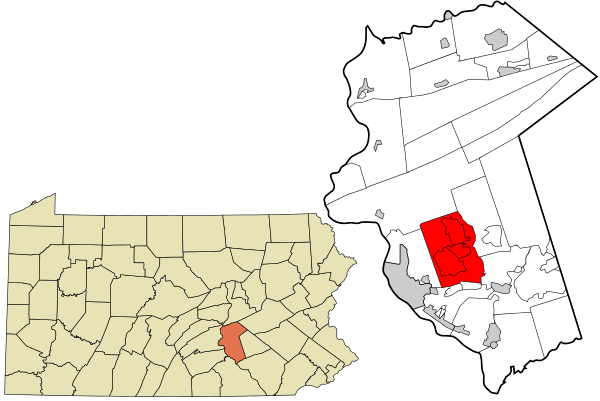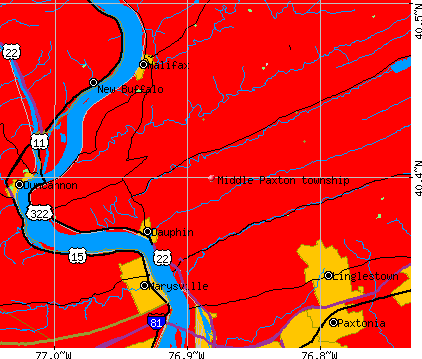

There are four unincorporated communities, all of which are census-designated places, in Lower Paxton Township. According to the United States Census Bureau, the township has a total area of 28.1 square miles (72.8 km²), all of it land. The northern border of the township follows or is close to the crest of Blue Mountain, the southernmost ridge of the Ridge-and-Valley Appalachians in this region. The eastern border of Lower Paxton Township is formed by Beaver Creek, a south-flowing tributary of Swatara Creek, which flows to the Susquehanna River. Lower Paxton Township is located in south-central Dauphin County, bordered by Susquehanna Township to the west, Middle Paxton Township to the north, West Hanover and South Hanover townships to the east, and Swatara Township to the south. Lower Paxton has remained the same area since Susquehanna Township was formed from it on May 1, 1815. Lower Paxtang Township embraced the areas now occupied by Lower Swatara, Swatara, Lower Paxton, Derry and Susquehanna townships. In 1878 more land was cut off the north and became Middle Paxton Township. Harrisburg Borough (now the city of Harrisburg) was formed in 1791, and Swatara Township was created in 1799. What remained in 1767 was then renamed Lower Paxton Township. Hanover Township was cut off to the east in 1736, and Upper Paxton Township was cut off to the north in 1767. In the years after Dauphin County was established, the township was slowly divided. About two years later in August 1787 the legislature began to splinter Paxtang Township, first into Upper Paxtang, Middle Paxtang and Lower Paxtang.

"Dauphin" refers to the Dauphin of France, heir apparent to the French throne, whose country the area government wanted to honor for its assistance in the Revolutionary War. On March 4, 1785, the boundaries of Paxtang Township also became the borders of Dauphin County, split from Lancaster County.


 0 kommentar(er)
0 kommentar(er)
